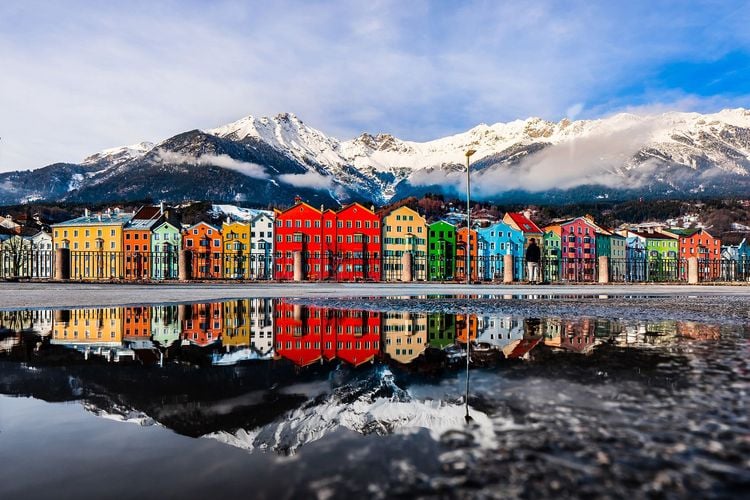The Hofkirche, not far from the famous Golden Roof, has the same entrance as the Tyrolean Art Museum. Maximilian I commissioned its construction. The ageing emperor, suffering from several strokes, began to worry about the legacy he would leave for future generations. So he ordered the construction of a gigantic mausoleum.
The Hofkirche is a church in the heart of Innsbruck, not far from the Little Golden Roof. It currently has the same entrance as the Tyrolean Art Museum. The monument is of particular importance to Austrian culture because it contains the tomb of Maximilian I. The emperor, who ruled the Holy Roman Empire for 26 years (1493 to 1519), is known as a builder and warrior who changed the destiny of the Habsburgs. He also made Innsbruck a city of the first order when, in 1500, he made it the centre of his immense empire, setting up the Chamber of Finance there and making it his place of residence. His choice was no accident: Maximilian loved the Alpine landscape of the Tyrol, which was both beautiful and strategically located (and to make matters worse, the emperor loved chamois hunting!).
So the church built in his memory had to be exceptional. In fact, it was Maximilian himself who drew up the plans for his own tomb! But as luck would have it, he died before the tomb was completed...
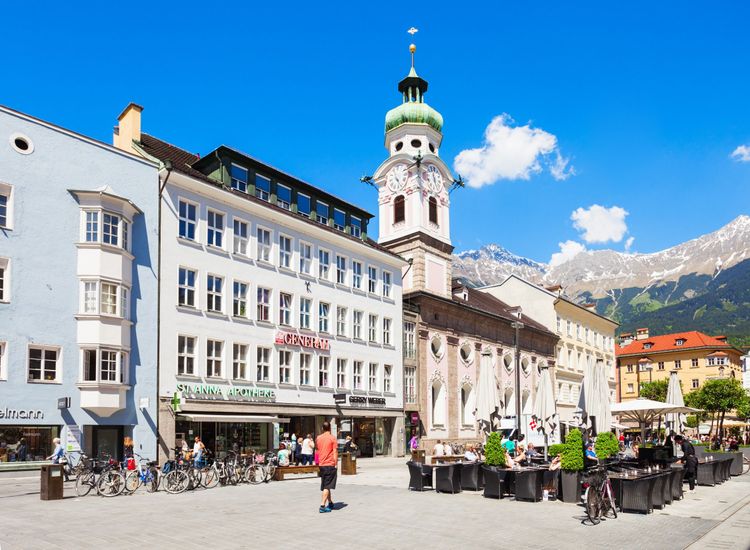
The untimely death of Maximilian I
On the downside, he died before the work was completed, 40 years later. The monarch was buried at Wiener Neustadt Castle, near Vienna, as he had wished. If the tomb is on display in the Hofkirche, along with the bronze statues that surround it (see the following paragraph), it is only because they are so large: the modest chapel in Wiener Neustadt did not have the necessary space.
A unique tomb surrounded by statues
What remains today is an empty but magnificently decorated tomb. It was Maximilian's grandson, Emperor Ferdinand I, who had the magnificent tomb transported to Innsbruck and erected as a cenotaph in the church he had built especially for him.
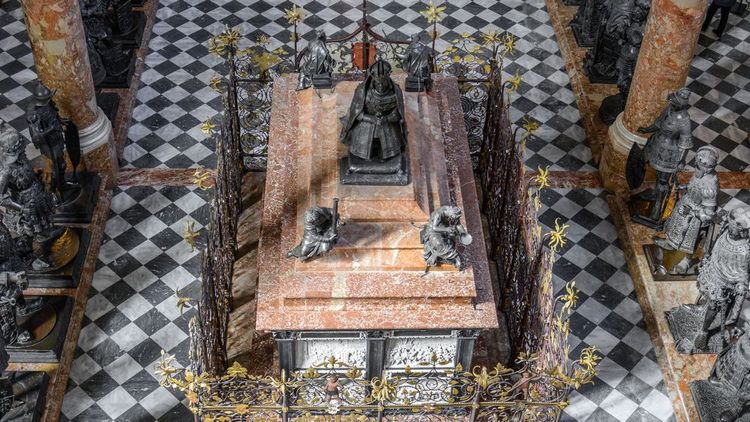
The tomb is a gigantic marble monument created by the artist Gilg Stuhlschreiber. It occupies the entire nave of the church, with a statue of Emperor Maximilian I kneeling in "eternal adoration" enthroned on its plinth.
The emperor, who can be perceived as a bit of a megalomaniac, also wanted to be surrounded by symbolic bronze statues representing his alliances, his supposed ancestors and his desire to conquer. 40 statues were ordered, but only 28 were delivered. The black statues over two metres high include King Arthur, Godefroi de Bouillon and even Clovis!
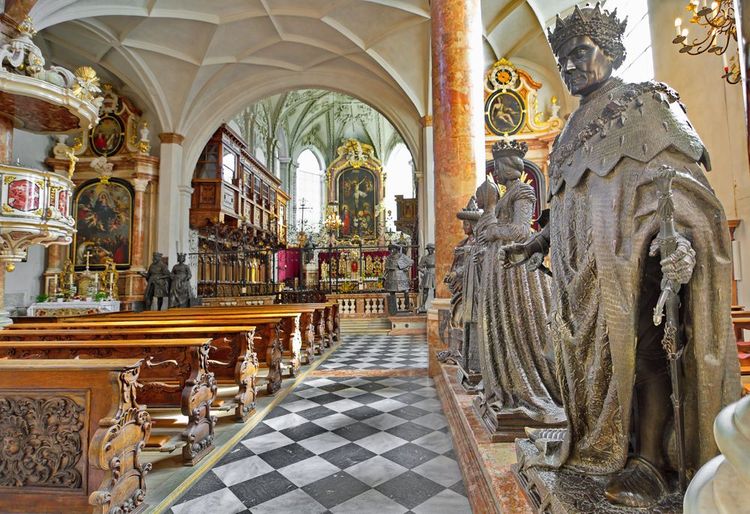
Unusual outfits
The costumes of the figures give a good idea of the variety of period costumes. You may notice that the statue of Emperor Rudolf, for example, is fitted with a brague, a kind of forerunner of the fly, made of iron to protect male attributes in battle.
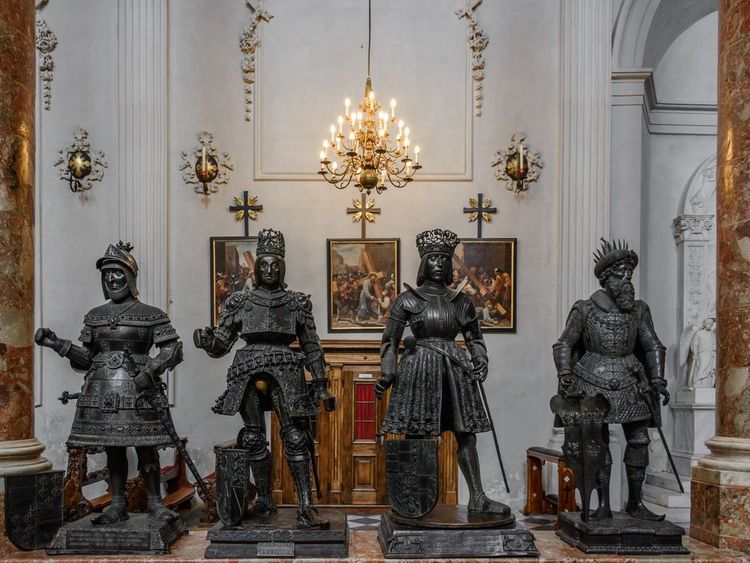
This detail of the armour was all the rage in men's fashion, particularly among the nobility, who liked both to emphasise this part of their anatomy and to hide their money there (clothes did not yet have pockets). This protuberance of Emperor Rudolph, which was de rigueur at the time, is generally much laughed at by visitors.
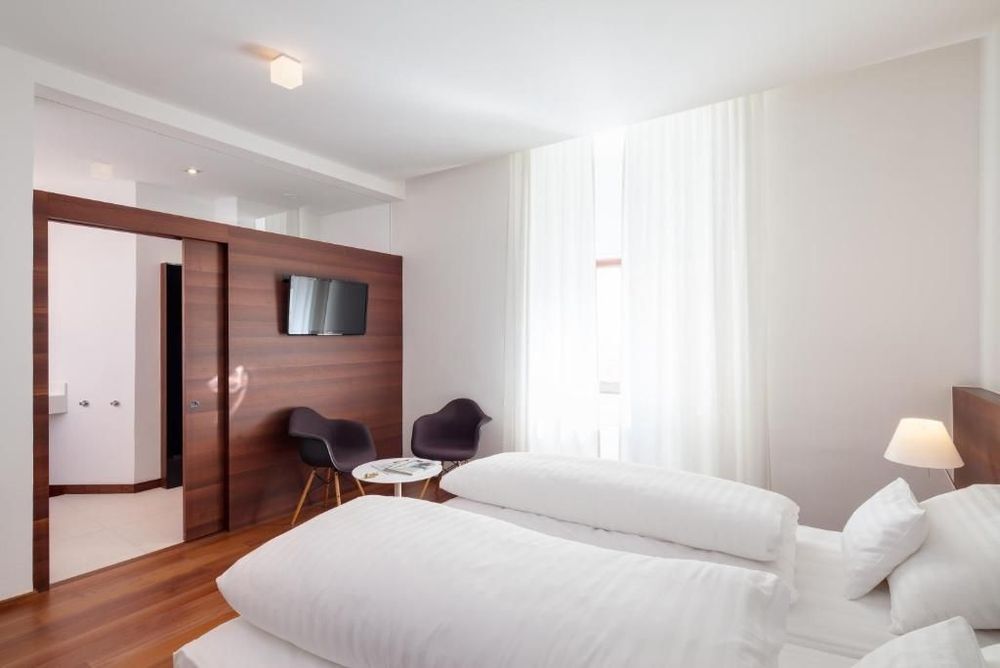 Innsbruck
Innsbruck
Hotel Central
Modern hotel with spa and gym, close to the station and city centre.Other famous tombs
The Hofkirche contains other famous tombs: in addition to those of Archduke Ferdinand II and his second wife (Philippine Welser), which are contained in the silver chapel, there is also the tomb of Andreas Hofer.

It is a precious piece of Tyrolean history. Andreas Hofer was a famous innkeeper who led the resistance against the Bavarian occupation. In 1810, he governed his province for 9 weeks in a popular revolt. However, he was shot by Napoleonic troops on 20 February 1810, making him a kind of Tyrolean martyr. During your visit, you'll notice that a black cloth veil has been hung over the statue, to symbolise mourning for the loss of South Tyrol to Italy in 1919.
